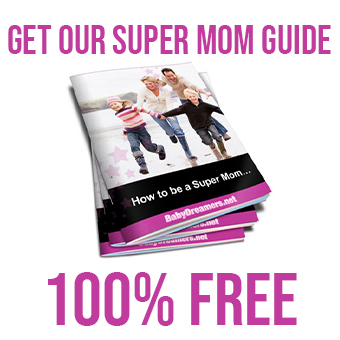When your baby is ready to start solids, homemade baby food can be a nourishing, cost-effective, and satisfying way to introduce a world of new flavors. You don’t need fancy gadgets or gourmet ingredients—just simple, wholesome foods prepared with love and safety in mind.
Homemade baby food allows you to control exactly what goes into your baby’s meals (no preservatives or added sugars) and gives your little one the chance to explore fresh flavors and textures. Whether you’re new to baby food prep or just looking for recipe inspiration, these 10 easy, nutritious recipes are perfect for babies around 6 months and older.
🥕 1. Carrot Purée
Why it’s great: Rich in beta-carotene (Vitamin A) for healthy vision and immunity.
How to make it:
- Peel and chop carrots.
- Steam until soft, then blend with a little water or breast milk until smooth.
🍌 2. Banana Mash
Why it’s great: Packed with potassium and fiber. No cooking required!
How to make it:
- Mash one ripe banana with a fork until smooth. Add breast milk or formula to thin if needed.
🥑 3. Avocado Cream
Why it’s great: Full of healthy fats for brain development.
How to make it:
- Mash half a ripe avocado and mix with breast milk, formula, or water for a creamy texture.
🍎 4. Apple & Cinnamon Purée
Why it’s great: High in fiber and naturally sweet.
How to make it:
- Peel and chop an apple.
- Steam until tender, then blend with a sprinkle of cinnamon and a splash of water.
🍠 5. Sweet Potato Mash
Why it’s great: Rich in vitamins and naturally sweet in flavor.
How to make it:
- Peel and cube a sweet potato.
- Boil or steam until soft, then mash or blend with water or breast milk.
🫐 6. Blueberry Oatmeal
Why it’s great: Loaded with antioxidants and iron-rich oats.
How to make it:
- Cook oats with water.
- Add a handful of blueberries and simmer until soft.
- Blend to desired texture.
🥦 7. Broccoli & Pear Purée
Why it’s great: Combines fiber-rich broccoli with the sweetness of pear to balance the taste.
How to make it:
- Steam broccoli florets and peeled pear slices.
- Blend together until smooth.
🍚 8. Rice Cereal with Pumpkin
Why it’s great: A comforting, iron-rich combo with vitamins from pumpkin.
How to make it:
- Cook white or brown rice and blend it into a porridge.
- Mix in steamed or canned (unsweetened) pumpkin puree.
🍑 9. Peach & Yogurt Blend
Why it’s great: A good source of calcium, protein, and vitamins.
How to make it:
- Peel and chop a ripe peach, then steam until soft.
- Blend with plain, full-fat yogurt.
🐔 10. Chicken, Pea & Carrot Purée
Why it’s great: Provides protein, iron, and veggies in one meal.
How to make it:
- Boil or steam chopped chicken breast with peas and carrots.
- Blend until smooth, adding water or broth to reach desired consistency.
💡 Tips for Making and Storing Homemade Baby Food
- Batch cook and freeze in ice cube trays for easy portioning.
- Store in airtight containers in the fridge for up to 3 days, or freeze for up to 1 month.
- Label and date your containers to keep track of freshness.
- As your baby grows, gradually make foods chunkier to encourage chewing.
🌈 Don’t Be Afraid to Mix & Match
Once you’ve introduced single-ingredient foods and ruled out allergies, you can combine flavors to keep things exciting. Try combos like:
- Apple + spinach
- Banana + oats
- Avocado + banana
- Sweet potato + lentils
Introducing your baby to a variety of tastes early can help set the foundation for adventurous, healthy eating later in life.
💬 Final Thoughts
Making your own baby food doesn’t have to be complicated. With a few basic ingredients and a blender, you can create nutritious meals your baby will love. Keep it simple, listen to your baby’s cues, and have fun watching them explore new flavors. After all, the journey into solid food is one of the first great food adventures of your child’s life!
❓ Frequently Asked Questions (FAQs)
1. When can I start giving my baby homemade food?
Most babies are ready around 6 months old, when they can sit up with support and show interest in food. Always talk to your pediatrician before starting solids.
2. Do I need to use organic ingredients?
Organic is a personal choice. Use fresh, clean, and safe produce, and always wash fruits and veggies thoroughly, whether organic or not.
3. How do I store homemade baby food safely?
Refrigerate for up to 3 days or freeze for 1–3 months. Store in BPA-free containers or ice cube trays with lids, and label them with dates.
4. Can I freeze all baby foods?
Most can be frozen, but avoid freezing foods with yogurt or eggs, as they may change texture. Freeze individual portions for easy use.
5. How do I reheat frozen baby food?
Thaw in the fridge overnight or use a hot water bath. Avoid microwaving directly in plastic containers. Stir well and test temperature before serving.
6. How fine should I blend the food?
Start with smooth purees for 6-month-olds. As your baby grows, transition to chunkier textures to support chewing and oral development.
7. What if my baby refuses homemade food?
It’s normal! Babies may need 10–15 exposures to a new food before accepting it. Keep offering it in small amounts without pressure.
8. Can I add spices or herbs to baby food?
Yes—mild spices like cinnamon, basil, or turmeric are safe in small amounts. Avoid salt, sugar, and spicy seasonings until after 1 year.











